When shopping for bedding, you’ve probably come across both mattress pads and mattress toppers. While they sound similar, they serve very different purposes. Simply put, a mattress pad adds light protection and comfort, while a mattress topper changes the feel and support of your mattress. Knowing the difference can help you choose the right option for better sleep.
What is a Mattress Pad?
A mattress pad is an entry-level extra layer for your mattress. Thin and lightweight, its padding secures to your mattress with straps or a fitted band. If you want to feel more cushioning when you sleep, this device adds a small amount of it, as well as light insulation and softness, acting as a barrier against spills, dust and dirt. Coming in a quilted design in cotton, polyester blend or down, it's easy to clean compared with a topper as it's machine washable. Some more advanced mattress pad options are made of slim memory foam or come with waterproof protection.
What is a mattress pad used for?
Many sleepers invest in a pad to provide a hygienic shield to their mattress against allergens, spillages and wear and tear. A pad can be used to give more cushioning without making much difference to the feel of the original mattress underneath.
Do mattress pads make the bed softer?
The clue is in the name: a mattress pad is like extra padding, so if your mattress is too firm for your liking, it’ll add a bit of extra comfort, but a topper is better for spinal alignment and support. For maximum softness from your pad, choose one with a down filling.
Is a mattress pad the same as a protector?
Pads and protectors are separate products. Pads can give protection to a mattress, but it’s best to also use a protector on top to give a stronger defence against bacteria, liquids and even bed bugs.

What Is a Mattress Topper?
Mattress toppers quite literally level up your mattress comfort, providing a bolster of thick cushioning that serves as a supportive top-up when layered on your current mattress. Filled with materials similar to a mattress, you can find memory foam, latex and feather down toppers on the market, depending on your preference.
What does a mattress topper do?
A mattress topper provides an extra layer of support for your mattress, especially if your current mattress is sagging and lacking adequate support. Not just improving overall comfort, it acts as a protective barrier, reducing further damage. Hybrid memory foam toppers with cooling bamboo-infused fibres can help to make your sleep more breathable and counteract the heat in the memory foam. If you suffer from aches and pains, a topper can help reduce pressure points.
Are mattress toppers worth it?
Providing relief from a sore back without breaking your budget, a mattress topper is definitely worth the investment. This bed addition has many advantages - it can extend the life of your mattress, improve your sleep and help alleviate your aches and pains.
Can a mattress topper fix a bad mattress?
The short answer is no. The state of your current mattress will determine whether you should opt for a new one or add a topper as a temporary solution. If you simply want to add more softness and cushioning as your mattress is too firm, or benefit from the coolness of a bamboo-infused topper, then it’s an essential top-up, but not a replacement.
Mattress Pad vs. Topper: What’s the difference?
When it comes to a mattress topper and a pad, the former will almost always come out on top for support and comfort. A pad offers some soft comfort and cushioning, but it’ll not provide fundamental support as it's made from cotton or down, compared with a topper, which usually contains memory foam. A topper is much thicker than a pad and changes how your mattress feels. Lasting longer than a pad, it lies on top of your mattress while a pad acts like a fitted sheet. Both add a layer of protection for your mattress, but a topper acts more as a boost to your current bed set-up, not a primary function against spills.
What is better: a mattress pad or a topper?
A mattress pad and topper serve different purposes; therefore, it depends on your needs which one you choose. A pad can provide protection against spills, dirt and dust, add softness and breathability, but a topper changes the feel of your mattress, either being more supportive, providing pain relief or softening up a firm mattress.
Can I use both a mattress pad and a topper together?
Yes, rest assured, a mattress topper and pad can work in conjunction; the mattress pad should be the top layer, with the mattress at the bottom and the topper in the middle. In fact, this can provide the best rest with a comfortable, supportive and protected bed.
| Feature | Mattress Pad 🛏️ | Mattress Topper 🌿 |
|---|---|---|
| Purpose | Protects mattress, adds light comfort | Changes firmness, support, and feel |
| Thickness | Thin (1–2 cm) | Thick (5–10 cm) |
| Comfort Level | Slightly softer, but not a big change | Major comfort change — softer or firmer |
| Durability | Protects the mattress, extends its lifespan | Can refresh an old mattress |
| Cleaning | Usually machine washable | Often spot-clean only |
| Best For | People who want mattress protection | People who want to change how their bed feels |
| Cost | Generally cheaper | Higher investment, but long-term comfort |
Which one should I choose based on my sleep needs?
If your mattress isn’t supportive enough or feels either too soft or too firm, a mattress topper is your best choice, but if you want to feel cooler because you sleep hot, then either a pad or topper can help. If you don’t want to break the bank and you want an easy care solution which adds a little bit of cushioning to your mattress, then a pad will cover all bases. It’s easy to wash and costs less than a topper.
Should I get a mattress topper for a firm mattress?
If you want to keep your mattress, but it's too firm, then it's a very good idea to get a mattress topper. A firm mattress can create pressure points, and a topper will add contouring and relieve the pressure on joints as you sleep.
Will a mattress pad help with back pain?
It's not recommended to add a mattress pad for back pain, as it’s thin and doesn’t change the support of the mattress underneath. In contrast, a memory foam topper aligns the spine and contours to your sleeping position.
What’s the best material for a mattress topper or pad?
When deciding on material, you must assess which sleep need is topmost. If you have backache, a memory foam topper can provide pressure relief and body contouring, and if your partner's movements disturb you, it isolates motion transfer. A latex topper is supportive, bouncy and breathable – a good option if you want your topper to last a long time, but it can be heavy and an expensive option. You can also get toppers in down, wool or polyfoam but these fabrics are not supportive. Feather down is soft and plush, and provides warmth for those who sleep cold, but down doesn't always help with allergy sufferers. Wool is moisture-wicking and provides temperature regulation.
A bamboo mattress pad is a cooling composition, as well as being moisture-wicking and eco-friendly. Cotton pads are soft, breathable and naturally hypoallergenic, also making them an ideal mattress pad texture. A polyester pad is the cheapest option, offering protection against bacteria, but if it's a waterproof pad, it can feel plastic and not as soft as a down or cotton alternative.
Are bamboo mattress toppers good?
For those who are hot sleepers, suffer from allergies or want to cushion a firm mattress, a bamboo mattress topper is the answer. Moisture-wicking, anti-allergy and cool, they also provide a super soft surface.
What’s the most cooling mattress topper material?
Natural latex provides very good ventilation, coming with pinholes for airflow. Another cooling option is gel-infused memory foam like the HydroFoam™ in our Bamboo Mattress Topper. Micro gel capsules inside the fibres reduce the natural heat of memory foam.
Final Thoughts: Choosing the Right Option for Better Sleep
If you just want to protect your mattress and add a touch of softness, a mattress pad will do the job. But if you’re looking to change the way your bed feels — whether that means more support, more softness, or cooling comfort — a mattress topper is the better choice.
At Panda London, our Bamboo Mattress Topper is one of our most popular products, offering breathable, hypoallergenic, and supportive comfort that can transform any mattress into a luxury sleep experience.
FAQ
1. What is the main difference between a mattress pad and a mattress topper?
A mattress pad is thinner and mainly protects your mattress, while a topper is thicker and designed to change the comfort, firmness, and support of your bed.
2. Do I need both a mattress pad and a mattress topper?
Not always. If you only need protection, a pad is enough. If you want to adjust comfort or support, a topper is best. Some people use both for maximum benefit.
3. Is a mattress topper worth it?
Yes, especially if your current mattress feels too firm, too soft, or is starting to age. A topper can refresh your bed without replacing the whole mattress.
4. Are mattress pads and toppers machine washable?
Mattress pads are usually machine washable. Mattress toppers are thicker and often require spot cleaning, though many have removable washable covers.
5. Which is better for back pain: a mattress pad or topper?
A topper is usually better for back pain because it provides noticeable support and pressure relief, while a pad is too thin to make a big difference.

![[MattressTopper] Panda London Memory Foam Bamboo Mattress Topper package box](http://pandalondon.com/cdn/shop/files/Bamboo_Mattress_Topper_Package_Box.webp?v=1742301823&width=1500)
![[MattressTopper] Panda London Memory Foam Bamboo Mattress Topper on the floor](http://pandalondon.com/cdn/shop/products/Panda-Memory-Foam-Bamboo-Mattress-Topper-Yoga-e1624045454555.jpg?v=1742301823&width=1000)
![[MattressTopper] Bamboo Mattress Topper Lifestyle Image with Memory Foam Pillows Product Page](http://pandalondon.com/cdn/shop/files/Bamboo_Mattress_Topper_Lifestyle_Image_with_Memory_Foam_Pillows_Product_Page.webp?v=1742301823&width=800)
![[MattressTopper] Bamboo Mattress Topper Lifestyle Image with Bamboo Pillows In the Garden room Product Page](http://pandalondon.com/cdn/shop/files/Bamboo_Mattress_Topper_Lifestyle_Image_with_Bamboo_Pillows_In_the_Garden_room_Product_Page.webp?v=1752572859&width=800)
![[MattressTopper] Panda London Memory Foam Bamboo Mattress Topper side](http://pandalondon.com/cdn/shop/files/Mattress_Topper_Isolated_-_resized.jpg?v=1752572859&width=800)
![[HybridMattressPro] Main Image for Hybrid Bamboo Mattress Pro with all awards](http://pandalondon.com/cdn/shop/files/Hybrid_Bamboo_Mattress_Pro_Main_product_Image_with_awards.webp?v=1753971649&width=1000)
![[HybridMattressPro] Breathable Hybrid Bamboo Mattress](http://pandalondon.com/cdn/shop/products/Breathable-Hybrid-Bamboo-Mattress.jpg?v=1753971649&width=1920)
![[HybridMattressPro] Hybrid Bamboo Mattress Pro Cover Zip](http://pandalondon.com/cdn/shop/files/Hybrid_Bamboo_Mattress_Cover.jpg?v=1753971649&width=800)
![[HybridMattressPro] Panda Hybrid Bamboo Mattress Pro](http://pandalondon.com/cdn/shop/files/Hybrid_Bambo_Memory_Foam_Mattress_-_BioCell_Foam_x.jpg?v=1755095108&width=800)
![[HybridMattressPro] Couple on a Hybrid Bamboo Mattress Pro](http://pandalondon.com/cdn/shop/files/Hybrid_Bamboo_Mattress_Couple.jpg?v=1753971649&width=800)
![[CloudDuvet] Panda London The Cloud Bamboo Duvet Packaging](http://pandalondon.com/cdn/shop/products/Panda-London-The-Cloud-Bamboo-Duvet-Panda-Life-scaled_00a651ad-4ca3-4105-b520-12a94c1a4f71.jpg?v=1713363286&width=1920)
![[CloudDuvet] Panda London The Cloud Bamboo Duvet Rolled](http://pandalondon.com/cdn/shop/products/Duvet-Listing-Images03.jpg?v=1713361452&width=1000)
![[CloudDuvet] Panda London The Cloud Bamboo Duvet Girl Huggin a Duvet on the Bed](http://pandalondon.com/cdn/shop/files/Cloud_Bamboo_Duvet_-_Lady_Hugging_it_on_Bed_LifestyleImage.jpg?v=1719327585&width=1000)
![[CloudDuvet] Panda London The Cloud Bamboo Duvet Guy In the Air with Cloud Bamboo Duvet](http://pandalondon.com/cdn/shop/files/GuyonaHybridBambooMattresswithCloudDuvet.jpg?v=1743097928&width=2000)
![[CloudDuvet] Panda Cloud Duvet Winter on the bed lifestyle image](http://pandalondon.com/cdn/shop/files/Panda_Cloud_Duvet_Winter_on_the_Bed_Lifestyle-1_image.jpg?v=1747994959&width=1000)
![[BBWhite] White 100% Bamboo Bedding](http://pandalondon.com/cdn/shop/files/Pure_White_Full_Bed.webp?v=1719581797&width=1000)
![[BBWhite] White 100% Bamboo Bedding Texture](http://pandalondon.com/cdn/shop/files/100_Bamboo_Bedding_-_Pure_White_-_Close_Up_02.webp?v=1719581781&width=1000)
![[BBWhite] White 100% Bamboo Bedding Woman in bed sleeping](http://pandalondon.com/cdn/shop/files/100-Bamboo-Bedding-Set-Pure-White-BB.webp?v=1719581846&width=768)
![[BBWhite] White 100% Bamboo Bedding Woman Duvet cover buttons](http://pandalondon.com/cdn/shop/files/hand_and_buttons_1.webp?v=1719581781&width=1000)
![[BBWhite] White 100% Bamboo Bedding Woman in bed looking and smiling-](http://pandalondon.com/cdn/shop/files/SatonMadeBed-White100_BambooBedding-white_-_BB_SideShot1000x1000.webp?v=1719581864&width=980)
![[BBUrbanGrey] Urban Grey 100% Bamboo Bedding](http://pandalondon.com/cdn/shop/files/Made_Bed_-_Urban_Grey_-_Wide_Shot_2_1_1.webp?v=1754572609&width=1000)
![[BBUrbanGrey] Cloud Duvet Urban Grey 100% Bamboo Bedding Set](http://pandalondon.com/cdn/shop/files/Cloud_Duvet_-_Grey_-_Close_up_2.webp?v=1754572609&width=1000)
![[BBUrbanGrey] Urban Grey 100% Bamboo Bedding Set Woman sitting on the bed](http://pandalondon.com/cdn/shop/files/Sat_in_Bed_-_Grey_100__Bamboo_Bedding_-_Wide_Shot.webp?v=1754572609&width=1000)
![[BBUrbanGrey] Urban Grey 100% Bamboo Bedding Set Woman Duvet buttons Panda London](http://pandalondon.com/cdn/shop/files/hand_buttons_grey_bedding_1.webp?v=1754572609&width=1000)
![[BBUrbanGrey] Woman Sitting on the Bamboo Bedding with coffee](http://pandalondon.com/cdn/shop/files/SatonMadeBed-White100_BambooBedding-SideShot1000x1000.jpg?v=1754572609&width=1000)
![[BBNavyBlue] Deep Sea Navy Blue 100% Bamboo Bedding](http://pandalondon.com/cdn/shop/files/Made_Bed_-_Navy_-_Wide_Shot_3_copy.webp?v=1754576637&width=1000)
![[BBNavyBlue] Deep Sea Navy Blue 100% Bamboo Bedding Texture](http://pandalondon.com/cdn/shop/files/Cloud_Duvet_-_Navy_-_Close_up_2.webp?v=1754576637&width=1000)
![[BBNavyBlue] Deep Sea Navy Blue 100% Bamboo Bedding Woman Sitting on the bed](http://pandalondon.com/cdn/shop/files/Sat_Up_in_Bed_-_Navy_100__Bamboo_Bedding_-_Hands_on_Bed.webp?v=1754576637&width=1000)
![[BBNavyBlue] Deep Sea Navy Blue 100% Bamboo Bedding Duvet Cover Buttons](http://pandalondon.com/cdn/shop/files/Cloud_Duvet_Cover_Buttons_-_Deep_Sea_Navy.webp?v=1754576637&width=1000)
![[BBNavyBlue] Deep Sea Navy Blue 100% Bamboo Bedding Woman sitting on the bed looking away](http://pandalondon.com/cdn/shop/files/SatonMadeBed-White100_BambooBedding-SideShot1000x1000-001.webp?v=1754576652&width=980)
![[BBPink] Vintage Pink Blue 100% Bamboo Bedding](http://pandalondon.com/cdn/shop/files/Made_Bed_-_Pink_-_Wide_Shot_copy.webp?v=1754576652&width=1000)
![[BBPink] Vintage Pink Texture 100% Bamboo Bedding](http://pandalondon.com/cdn/shop/files/Cloud_Duvet_-_Pink_-_Close_up_2.webp?v=1754576652&width=1000)
![[BBPink] Vintage Pink Woman Sitting on the 100% Bamboo Bedding](http://pandalondon.com/cdn/shop/files/Sat_Up_in_Bed_-_Pink_-_Hands_on_Bed.webp?v=1754576652&width=1000)
![[BBPink] Vintage Pink Woman Sitting on the 100% Bamboo Bedding Duvet Cover](http://pandalondon.com/cdn/shop/files/Cloud_Duvet_Cover_Buttons_-_Vintage_Pink.webp?v=1754576652&width=1000)
![[BBPink] Vintage Pink Woman Sitting on the 100% Bamboo Bedding Woman looking far away](http://pandalondon.com/cdn/shop/files/SatonMadeBed-White100_BambooBedding-SideShot1000x1000-001_Vintage_Pink.webp?v=1754576652&width=980)
![[BBGrey] Light Grey 100% Bamboo Bedding](http://pandalondon.com/cdn/shop/files/Made_Bedding_in_Bedroom_-_Urban_Grey_-_Wide_Shot.webp?v=1754576637&width=1000)
![[BBGrey] Light Grey 100% Bamboo Bedding texture](http://pandalondon.com/cdn/shop/files/Texture17.webp?v=1754576637&width=1000)
![[BBGrey] Light Grey 100% Bamboo Bedding with Woman smiling](http://pandalondon.com/cdn/shop/files/Sat_Up_in_Bed_-_Grey_-_Hands_on_Bed.webp?v=1754576637&width=1000)
![[BBGrey] Light Grey 100% Bamboo Bedding with Duvet Cover buttons](http://pandalondon.com/cdn/shop/files/Cloud_Duvet_Cover_Buttons_-_Quiet_Grey.webp?v=1754576637&width=1000)
![[BBGrey] Light Grey 100% Bamboo Bedding with Woman smiling and sitting coffee](http://pandalondon.com/cdn/shop/files/SatonMadeBed-White100_BambooBedding-SideShot1000x1000-002-_Grey.webp?v=1754576637&width=980)
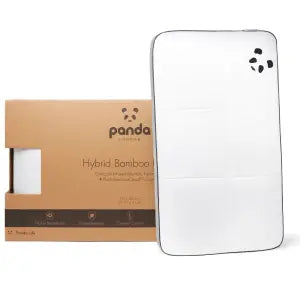 Hybrid Bambuskissen
Hybrid Bambuskissen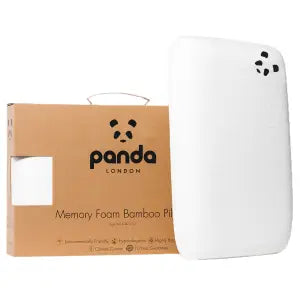 Memory Foam Bambuskissen
Memory Foam Bambuskissen Memory Foam Bambuskissen für Kinder
Memory Foam Bambuskissen für Kinder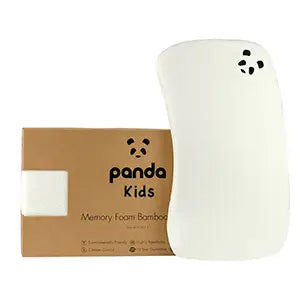 Baby Memory Foam Bambuskissen
Baby Memory Foam Bambuskissen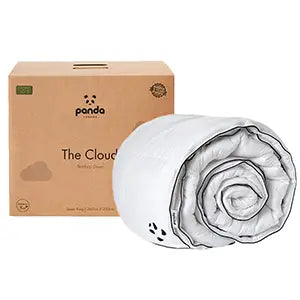 Panda Bettdecke Cloud
Panda Bettdecke Cloud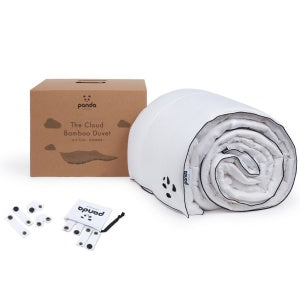 Bamboo Summer Duvet
Bamboo Summer Duvet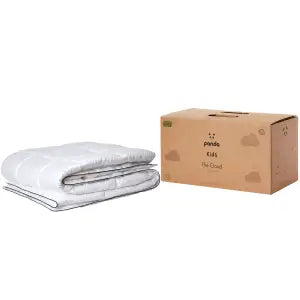 Kinder Cloud Bettdecke
Kinder Cloud Bettdecke

![[all] Bamboo Mattress Protector Package - PandaLondon](http://pandalondon.com/cdn/shop/files/Bamboo_Mattress_Protector_-_Packaging_Image_-_White_Background.webp?v=1721139172&width=1900)
![[all] Bamboo Mattress Protector for Hybrid Bamboo Mattress](http://pandalondon.com/cdn/shop/files/Bamboo_Mattress_Protector_New.webp?v=1721138562&width=1000)
![[all] Book on a Bamboo Mattress Protector](http://pandalondon.com/cdn/shop/products/Mattress-Protector-Listing-Images02.jpg?v=1721139189&width=1500)
![[all] Bamboo Mattress Protector Corner](http://pandalondon.com/cdn/shop/products/Mattress-Protector-Listing-Images03-e1623787734812.jpg?v=1721139189&width=1300)
![[all] Bamboo Mattress Protector Corner in line Panda London](http://pandalondon.com/cdn/shop/products/Mattress-Protector-Listing-Images04.jpg?v=1721139183&width=1500)
![[all] Panda Bamboo Mattress Protector Panda London](http://pandalondon.com/cdn/shop/files/Panda-Bamboo-Mattress-Protector-Guarantee-768x768_jpg_450393f5-91a9-499f-b15a-12d636a9a8b7.webp?v=1721139183&width=768)
![[all] Topper Cover Listed Panda London](http://pandalondon.com/cdn/shop/products/Topper-Cover-Listing_isolated-01.png?v=1711732989&width=2520)